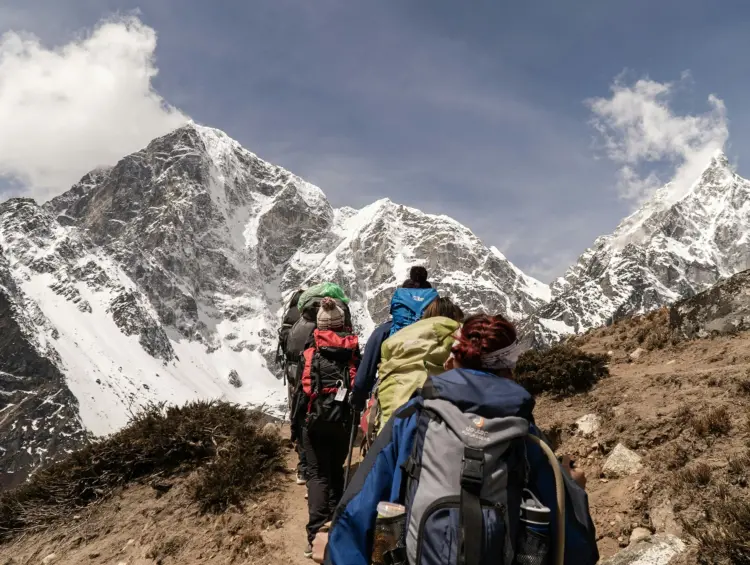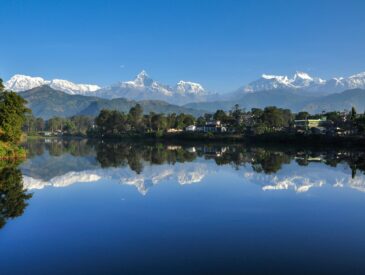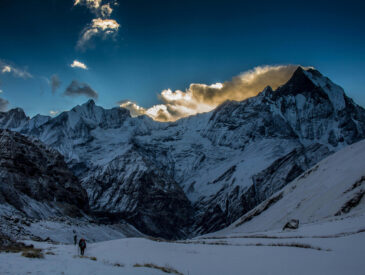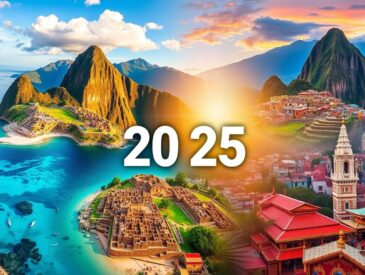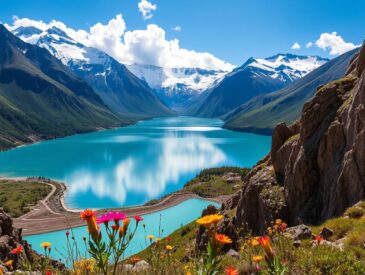The Kanchenjunga Trek is indeed a treasure trove of trekking and pristine and extremely peaceful adventure in Eastern Nepal. Kanchenjunga, the third highest mountain in the world, stands 8586 meters above sea level (28169 feet), and trekking around its base gives an almost exceptional experience for trekkers in search of solitude and inspiring nature. This is certainly not characteristic of a trek meant for base camp but rather to soak into the cultural and natural wealth of the region.
Why Kanchenjunga Trek?
- Untouched Beauty: The Kanchenjunga Trek is not as crowded as other popular trekking routes in Nepal, such as Everest Base Camp and Annapurna Circuit. Here, one can really enjoy the pristine landscapes, lush forests, and vibrant rhododendron valleys without any crowd at all.
- Immersion in Culture: The Kanchenjunga region has different ethnic groups like Rai, Limbu, and Sherpa. The trekkers will get a chance to be with these local people, experience their hospitality, and learn about customs and traditions.
- Magic Scenery: From green lowcountry up to the snowy heights of the world, the Himalaya, this trek has a grandeur of the setting. You will get terraced fields, dense forests, alpine grasses, and glacial moraine, plus breathtaking views of Kanchenjunga and other rising peaks.
Highlights of the Kanchenjunga Trek
- Kanchenjunga Base Camp: This is the final destination of the trek and the most amazing scenic views of the Kanchenjunga massif. Accessible to North and South Base Camps, each provides a different view of the mighty mountain.
- Yalung Glacier: The stunning glacial section that adds a touch of adventure and beauty to the trek. Populated by soaring peaks, it is a glimpse into the raw power of nature.
- Remote Villages: Trek to quaint villages such as Taplejung, Ghunsa, and Yamphudin, where time seems to stand still. They give a feel of the traditional way of living and are perfect spots to rest and soak in the local culture.
- Wildlife: Here live some rare and endangered species like the snow leopard, red panda, and Himalayan black bear. And this is just a small part of the vast biodiversity of the Kanchenjunga Conservation Area. Birders have quite a lot to discover as well.
Trekking Route and Itinerary
The Kanchenjunga Trek gives access to many routes, but one of the most popular approaches is:
- Kathmandu to Taplejung: Fly to Bhadrapur and drive to Taplejung—the most common trek starting point.
- Taplejung to Mitlung: Gradually trek through luxurious, rich landscapes down the Tamur River Valley.
- Mitlung to Chirwa: Pass through various picturesque villages and terraced fields that give an insight into local agricultural practices.
- Chirwa to Sekathum: Dense forests and, along with the Ghunsa River, some great views of snow-capped peaks.
- Sekathum to Amjilosa: A strenuous day of steep ascents and descents, culminating in the village of Amjilosa.
- Amjilosa to Gyabla: Still continuing through bamboo and rhododendron forests, watching for wildlife.
- Gyabla to Ghunsa: Accede to the alpine zone with the important village of Ghunsa, where you can rest and acclimatize.
- Hike up to Kambachen: Presents a mild gradient with a grand vista of surrounding peaks.
- Kambachen to Lhonak: Treks on mountains, glaciers, and high-altitude landscapes. Lhonak is a dramatic view of the Kanchenjunga range.
- Lhonak to Pangpema (northern base camp): Get to the northern base camp, where astounding views will be seen, of Kanchenjunga and its adjoining peaks.
- Return through the same route: tramp back to Taplejung or go to South Base Camp via Yalung Glacier.
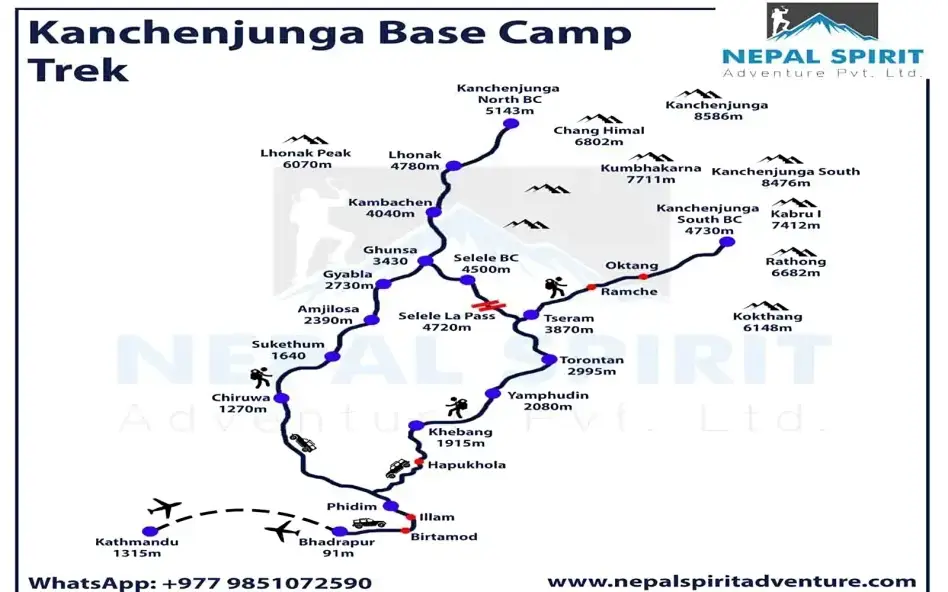
Best Time To Trek
The best seasons to undertake the Kanchenjunga Trek are within the premonsoon (March to May) and postmonsoon (late September to November) seasons. The weather during this period is usually stable, and skies are generally clear, ensuring good visibility of the mountains.
Preparation and Permits
Being in a remote Himalayan region, the Kanchenjunga Trek requires quite a lot of preparation. Ensure that you have trekking gear to that of having sufficient time for acclimatization and physical fitness. Kanchenjunga Restricted Area Permit and Kanchenjunga Conservation Area Permit would be required. These are two permits that would be required to do the trek.
Conclusion
Kanchenjunga is a trek in pure exploration, detached from the typical tourist trails from where trekkers find themselves into one of the remoter and more beautiful places in Nepal. Untouched landscapes, rich cultural experiences, and the highest peaks of the Himalayas will certainly create beautiful memories for those who would love to explore without being put back. This trek would be an experience of a lifetime, whether you are an avid trekker or an enthusiastic nature lover.
Enjoy the Kanchenjunga Trek in the magic of Eastern Nepal.
Frequently Asked Questions (FAQs) – Kanchenjunga Trek, Eastern Nepal
Where is the Kanchenjunga trek located?
The Kanchenjunga trek is in eastern Nepal, near the border of Sikkim (India). It takes you through the Kanchenjunga Conservation Area (KCA) to the base camps of Kanchenjunga North (5,143m) and South (4,736m), the world’s third-highest mountain.
How difficult is the Kanchenjunga trek?
The trek is challenging (rated strenuous) due to remote trails, high altitudes (up to 5,143m), and long walking days (5–7 hours daily). Prior trekking experience and good fitness are recommended.
Do I need a permit for the Kanchenjunga trek?
Yes! You need:
- Kanchenjunga Restricted Area Permit (RAP): USD $20/week (first 4 weeks), USD $25/week thereafter.
- Kanchenjunga Conservation Area Permit (KCAP): NPR 3,000 (~USD $23).
- Trekkers’ Information Management System (TIMS) card: NPR 2,000 (~USD $15).
When is the best time to trek Kanchenjunga?
The ideal seasons are:
- Spring (March–May): Stable weather, blooming rhododendrons.
- Autumn (September–November): Clear skies, best mountain views.
- Avoid monsoon (June–August) and winter (December–February) due to heavy snow/rain.
How long is the Kanchenjunga trek?
The full Kanchenjunga Circuit Trek takes 18–24 days, depending on the route (North Base Camp, South Base Camp, or both). Teahouse treks average 14–16 days, while camping expeditions may take longer.
Are there teahouses on the Kanchenjunga trek?
Basic teahouses are available up to Ramche (4,580m), but facilities are sparse beyond Ghunsa. Remote sections may require camping. Carry cash (NPR) as ATMs are unavailable.
What is the altitude sickness risk on this trek?
High risk due to elevations above 4,000m. Acclimatize properly in Ghunsa (3,475m) and Ramche. Symptoms like headaches or nausea require immediate descent.
Is the Kanchenjunga trek safe?
Yes, but precautions are essential:
- Hire a local guide/porter for navigation.
- Avoid solo trekking (remote area).
- Carry a first-aid kit and travel insurance covering high-altitude rescue.
What should I pack for the Kanchenjunga trek?
Essentials include:
- Layered clothing (thermal, down jacket).
- Sturdy trekking boots and crampons (for snow).
- Water purification tablets (limited bottled water).
- Solar charger (limited electricity).
How do I reach the Kanchenjunga trek starting point?
- Fly from Kathmandu to Bhadrapur, then drive to Taplejung (Suketar).
- Alternatively, take a long bus ride (24+ hours) from Kathmandu to Taplejung.
The Kanchenjunga trek is in eastern Nepal, near the border of Sikkim (India). It takes you through the Kanchenjunga Conservation Area (KCA) to the base camps of Kanchenjunga North (5,143m) and South (4,736m), the world’s third-highest mountain.
The trek is challenging (rated strenuous) due to remote trails, high altitudes (up to 5,143m), and long walking days (5–7 hours daily). Prior trekking experience and good fitness are recommended.
Yes! You need:
- Kanchenjunga Restricted Area Permit (RAP): USD $20/week (first 4 weeks), USD $25/week thereafter.
- Kanchenjunga Conservation Area Permit (KCAP): NPR 3,000 (~USD $23).
- Trekkers’ Information Management System (TIMS) card: NPR 2,000 (~USD $15).
The ideal seasons are:
- Spring (March–May): Stable weather, blooming rhododendrons.
- Autumn (September–November): Clear skies, best mountain views.
- Avoid monsoon (June–August) and winter (December–February) due to heavy snow/rain.
The full Kanchenjunga Circuit Trek takes 18–24 days, depending on the route (North Base Camp, South Base Camp, or both). Teahouse treks average 14–16 days, while camping expeditions may take longer.
Basic teahouses are available up to Ramche (4,580m), but facilities are sparse beyond Ghunsa. Remote sections may require camping. Carry cash (NPR) as ATMs are unavailable.
High risk due to elevations above 4,000m. Acclimatize properly in Ghunsa (3,475m) and Ramche. Symptoms like headaches or nausea require immediate descent.
Yes, but precautions are essential:
- Hire a local guide/porter for navigation.
- Avoid solo trekking (remote area).
- Carry a first-aid kit and travel insurance covering high-altitude rescue.
Essentials include:
- Layered clothing (thermal, down jacket).
- Sturdy trekking boots and crampons (for snow).
- Water purification tablets (limited bottled water).
- Solar charger (limited electricity).
- Fly from Kathmandu to Bhadrapur, then drive to Taplejung (Suketar).
- Alternatively, take a long bus ride (24+ hours) from Kathmandu to Taplejung.

